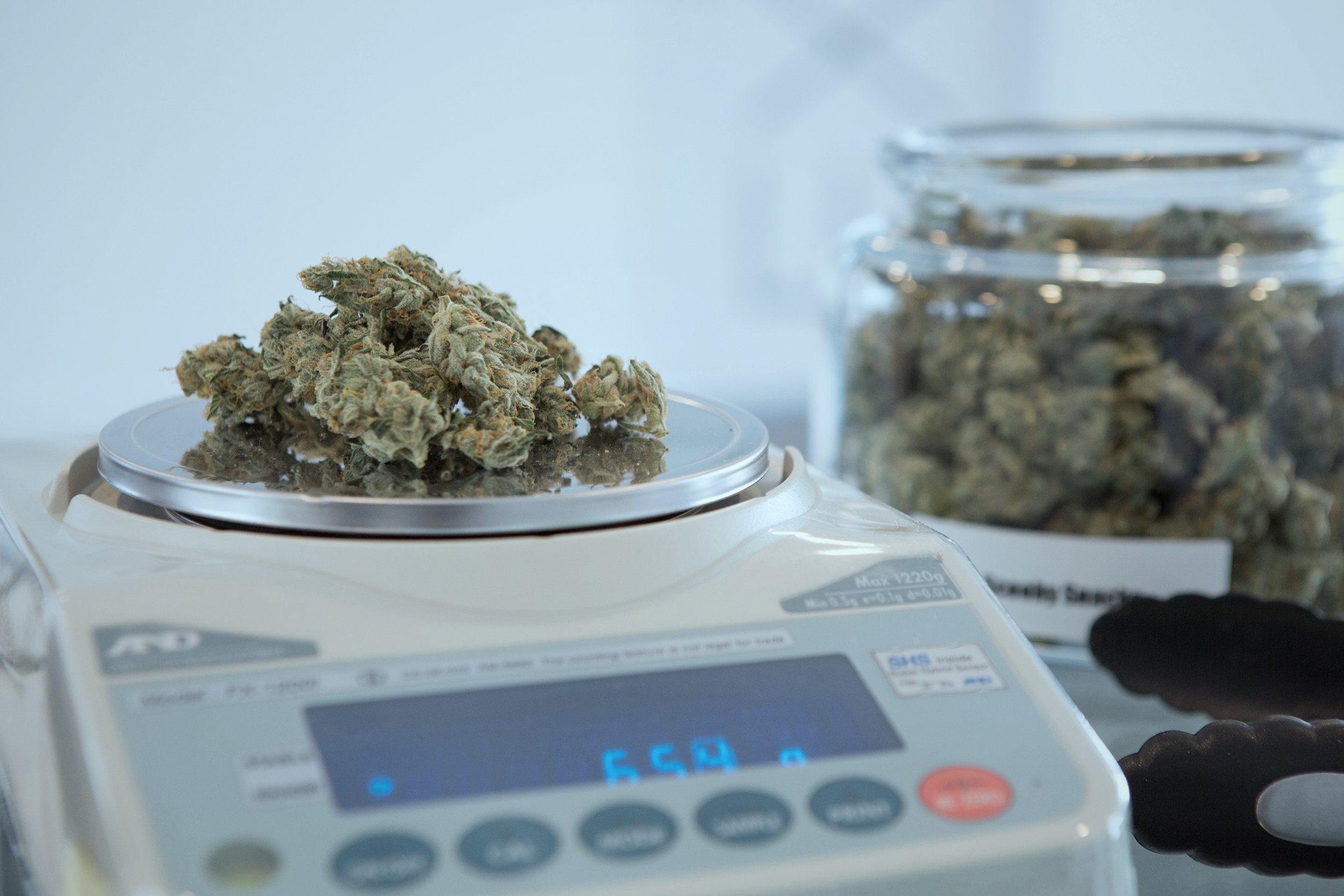A New Roadside Drug Testing Device May Be Coming To A Road Near You. Heres What You Need to Know.
The federal government has announced its intention to approve another roadside drug screening device.
The Abbott SoToxa is currently under a 30-day public consultation period. It could be approved for use by police as early as May 19, 2019. If it is, it will join the Draeger DrugTest 5000 as one of only two federally approved drug screening devices in Canada.

But what do we know about the Abbott SoToxa?
The short answer is not much…yet. The company that produced the SoToxa, Alere, was recently acquired by Abbott, a health-care manufacturing company based in the U.S.
What we do know about it, though, is that it has been largely touted as a better device than the Draeger DrugTest 500, which received a relatively frosty reception from police agencies across the country when it was introduced last August.
But how will they stack up?
Here are six things you need to know.
1. Both devices use saliva samples to test for a wide variety of drugs.
Although roadside drug screening devices were introduced for use in this country following the legalization of cannabis, they can test for more than just THC.
The SoToxa is capable of testing for THC – the psychoactive component of cannabis – as well as cocaine, methamphetamines, opiates, methadone, amphetamine and benzodiazepines.
The Draeger may have one up on the SoToxa, as it also tests for all of these substances, plus ketamine.
Remember – driving while impaired by any drug is a criminal offence in this country. Drug impaired driving is not just limited to cannabis use, although there are specific provisions under the Criminal Code to deal with cannabis exclusively.
2. The SoToxa is much smaller.
When it was first introduced, many people were shocked with the Draeger DrugTest 5000’s appearance. After all, it is relatively large and looks more like a Keurig coffee maker than drug testing tool. This can make it clumsy and awkward to use on the roadside and in unsecured environments.
The SoToxa, on the other hand, looks much easier to use. With a hand-held, portable design, it looks lightweight and compact.
There is little doubt that police officers will prefer its design over the Draegers.
3. Some police officers may already be familiar with the SoToxa.
In the year leading up to the passage of Bill C-46, which allowed the use and approval of roadside drug testing equipment for the first time in Canada, Health Canada ran pilot projects with select police detachments across the country. They asked police to use two different devices – the SecureTech and the Alere – and to provide them with feedback about their functionality in the field.
When neither of these devices were approved, many people were shocked. After all, the feedback had been largely positive.
Client Testimonials
Read more reviews from past clients:
Google Reviews or Lawyer Ratingz
Dealing with the Sarah Leamon Law Group was an absolute pleasure. They were friendly and efficient in communicating with me, and dealt with my case in a timely manner. They were thorough and meticulous in putting together a strong case that resulted in a WIN. Highly recommend their services.
K.R., Google Review
Sarah Leamon is amazing! She got back to me right away even though she was out of office! She not only jumped on my file quickly, she also got my prohibition reduced from 7 Months to 3 Months a BIG win in my eyes!!
Lawyer Ratingz Review
From my initial contact with Sarah, providing me with detailed information on next steps, to answering all my questions throughout the process and the representation (thank you, Hyemin!), the service offered by Sarah Leamon Law Group was top notch. Would highly recommend.
S.S., Google Review
Hyemin at Sarah leamon law group is a very respectful, kind, and bright lady. Their team was thorough with my case making the process less worrisome. Would recommend 10/10.
M., Google Review
Have had Sarah as my go-to for any and all my traffic issues. She is very compassionate and is excellent at explaining every part of the process and keeping your stress level way down. Multiple times ive hired Sarah and i am always completely confident she will get the best result, as she has done time and time again. wouldn't go anywhere else, definitely #1 in my eyes!
M.W., Google Review
Dealing with the Sarah Leamon Law Group was an absolute pleasure. They were friendly and efficient in communicating with me, and dealt with my case in a timely manner. They were thorough and meticulous in putting together a strong case that resulted in a WIN. Highly recommend their services.
K.R., Google Review
Sarah Leamon is amazing! She got back to me right away even though she was out of office! She not only jumped on my file quickly, she also got my prohibition reduced from 7 Months to 3 Months a BIG win in my eyes!!
Lawyer Ratingz Review
From my initial contact with Sarah, providing me with detailed information on next steps, to answering all my questions throughout the process and the representation (thank you, Hyemin!), the service offered by Sarah Leamon Law Group was top notch. Would highly recommend.
S.S., Google Review
Hyemin at Sarah leamon law group is a very respectful, kind, and bright lady. Their team was thorough with my case making the process less worrisome. Would recommend 10/10.
M., Google Review
Have had Sarah as my go-to for any and all my traffic issues. She is very compassionate and is excellent at explaining every part of the process and keeping your stress level way down. Multiple times ive hired Sarah and i am always completely confident she will get the best result, as she has done time and time again. wouldn't go anywhere else, definitely #1 in my eyes!
M.W., Google Review
Dealing with the Sarah Leamon Law Group was an absolute pleasure. They were friendly and efficient in communicating with me, and dealt with my case in a timely manner. They were thorough and meticulous in putting together a strong case that resulted in a WIN. Highly recommend their services.
K.R., Google Review
Sarah Leamon is amazing! She got back to me right away even though she was out of office! She not only jumped on my file quickly, she also got my prohibition reduced from 7 Months to 3 Months a BIG win in my eyes!!
Lawyer Ratingz Review
From my initial contact with Sarah, providing me with detailed information on next steps, to answering all my questions throughout the process and the representation (thank you, Hyemin!), the service offered by Sarah Leamon Law Group was top notch. Would highly recommend.
S.S., Google Review
Hyemin at Sarah leamon law group is a very respectful, kind, and bright lady. Their team was thorough with my case making the process less worrisome. Would recommend 10/10.
M., Google Review
Have had Sarah as my go-to for any and all my traffic issues. She is very compassionate and is excellent at explaining every part of the process and keeping your stress level way down. Multiple times ive hired Sarah and i am always completely confident she will get the best result, as she has done time and time again. wouldn't go anywhere else, definitely #1 in my eyes!
M.W., Google Review
Prior to the government’s approval of the Draeger DrugTest 5000 in August, 2018, little had been known about the device. It had not been used in the pilot projects and Canadian police were unfamiliar with it.
But in 2017, Alere, the company that manufactured one of the handheld drug testing devices evaluated by police in the pilot projects, was acquired by health-care giant Abbott. This acquisition may have somewhat delayed the availability of their products.
It appears that the device developed, manufactured and previously branded as Alere has now been re-born the Abbott SoToxa.
While it is unclear at this point whether they have made any minor tweaks or adjustments to the device itself, chances are high that at least some police officers will recognize it when it hits the streets later this year.
4. Both devices have operational limitations.
One of the main concerns with the Draeger has to do with its narrow operational temperature range. The device only works in temperatures between 4 and 40 degrees Celsius.
This means that when temperatures drop, so does the devices reliability. The Draeger has been known to produce both false negative and false positive readings when operating outside its temperature range.
For at least six months of the year, this is a big problem for the vast majority of the Canadian population.
While the SoToxa boasts a wider operational temperature range, claiming that it can work in cold weather, it is not clear exactly what its definition of “cold” is just yet.
Chances are that, much like the Draeger, the device will be unable to withstand the extreme polar cold of our far, Northern regions.
5. The SoToxa works faster.
Analyzing a salvia sample at the roadside takes time.
For the Draeger, it can take upwards of eight minutes.
Legal experts and lawyers, myself included, have opined that this may be too long to be consistent with established Charter rights. After all, the roadside testing process is meant to be a relatively quick process. In order to be legally valid and consistent with the Charter, motorists should only encounter minimal delay. Eight minutes may be a few minutes too long.
The SoToxa is able to analyze salvia samples in about five minutes, shaving approximately three minutes off the Draeger’s best time.
However, the question remains as to whether or not a delay of even five minutes will be permissible under our laws. In the end, it simply may not matter.
6. Neither device can test for impairment.
That’s right – neither the Draeger nor the SoToxa can actually test for drug impairment. It just doesn’t work that way.
The only thing the devices can do is detect the presence of drugs in a salvia sample, which tells us absolutely nothing about impairment. This shortcoming will be the biggest problem for either device when its use is eventually and inevitably challenged in a court of law.
It’s simply a hurdle that – in my humble opinion – neither of them can overcome.
Read this article as it appears in The Cannabis Life Network.




